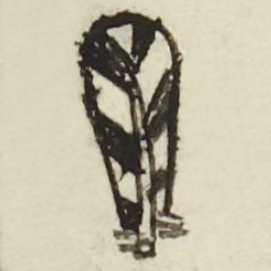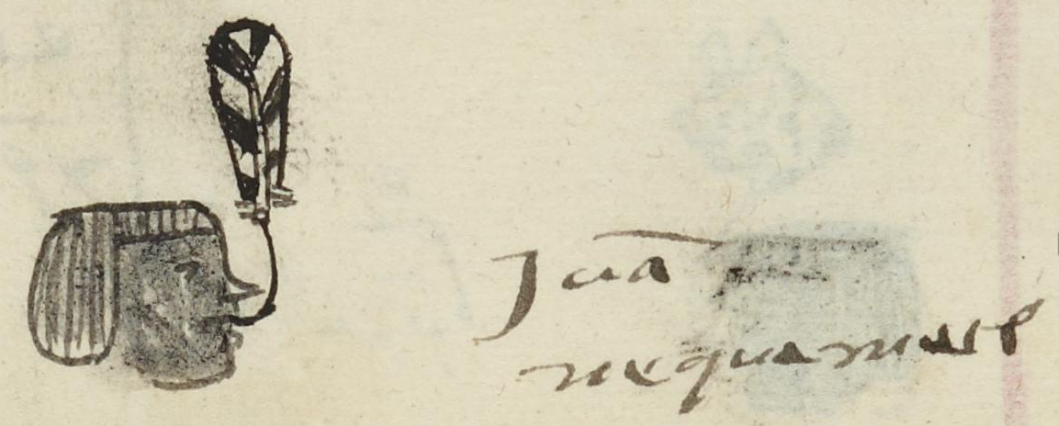Necuametl (MH634v)
This black-line drawing of the simplex glyph for the personal name Necuametl ("Spiny Agave" or "Palm Tree," attested here as a man's name) shows a dramatic, upright feather with alternating black and white segments in the vane and downy barbs at the base.
Stephanie Wood
See the Florentine Codex image of a necuametl, which compares well to the tzihuactli, suggests that they are both agaves. See below. In some glyphs for both necuametl and tzihuactli, the visual can be what looks like a tree trunk with the branches cut off in such a way as to leave stubs. Since both of these terms have a "hua" sound, perhaps the tree or wood (cuahuitl) serves as a phonetic indicator.
The gloss says nothing about feathers, so this is a puzzle. What bird provided this feather is also unclear, but it is something like the feathers associated with the names Ayocuan and Cuazol (see below). Quail feathers are striking.
The name Necuametl was apparently held by a governor of Chalco. [See: Manuel Orozco y Berra, Historia antigua y de la conquista de México: 3.pte (1880, 310).] There was also a tecuhtli named Ome Miquiztli Necuametl of what is now the state of Puebla. [See: Historia Tolteca-Chichimeca, eds. Paul Kirchhoff, Lina Odena Güemes, y Luis Reyes García (México: CISINAH, INAH-SEP, 1976), 138–140.] Perhaps one of these famous men called Necuametl was associated with a type of feathered headdress that this single feather is meant to recall.
Stephanie Wood
nequametl
Necuametl
Stephanie Wood
1560
Jeff Haskett-Wood
feathers, plumas, agaves, nombres de hombres

necuame(tl), a native palm or agave, https://nahuatl.wired-humanities.org/content/necuametl
necua(tl), unfermented maguey juice,
https://nahuatl.wired-humanities.org/content/necuatl
me(tl), maguey agave, https://nahuatl.wired-humanities.org/content/metl
Matrícula de Huexotzinco, folio 634v, World Digital Library, https://www.loc.gov/resource/gdcwdl.wdl_15282/?sp=351&st=image.
This manuscript is hosted by the Library of Congress and the World Digital Library; used here with the Creative Commons, “Attribution-NonCommercial-ShareAlike 3.0 License” (CC-BY-NC-SAq 3.0).







